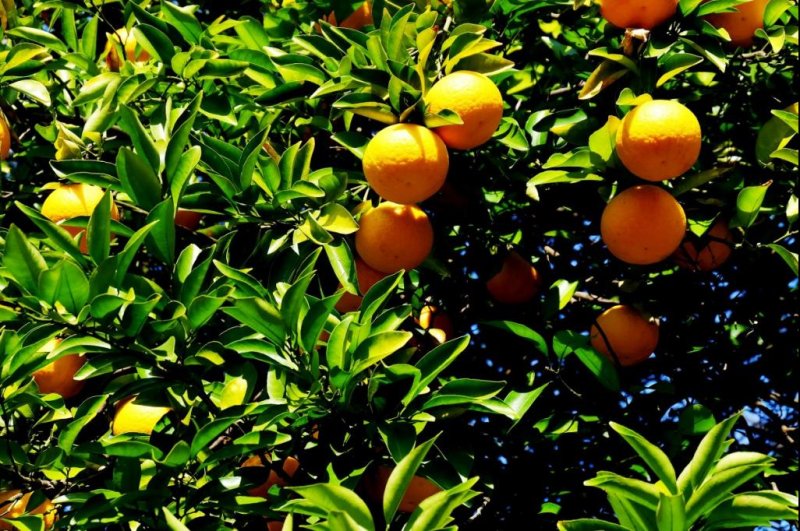
A new genomic analysis has uncovered the genetic origins of Japan's most popular mandarin varieties. Photo by Pxhere/CC
July 26 (UPI) -- In Japan, mandarins aren't just a tasty sweet. The nation's favorite citrus varieties, the shiikuwasha and the ornamental tachibana, hold both historical and cultural significance.
But until now, researchers weren't sure where they came from. In a new study, published Monday in the journal Nature Communications, scientists analyzed the genomes of 69 East Asian mandarin varieties, revealing the genetic origins of popular fruit.
Previous studies have traced the mandarin's genetic roots to Southern China's Hunan Province, but the latest survey yielded a surprise. Scientists found the region is home to two mandarin subspecies.
"We found that one of these mandarin subspecies can produce offspring that are genetically identical to the mother," lead study author Guohong Albert Wu said in a press release.
RELATED Mandarin oranges nothing to sneeze at
"Like many other plants, wild citrus typically reproduces when the pollen of the father combines with the egg of the mother, mixing the genes from both parents in the seed," said Wu, a research collaborator at the Lawrence Berkeley National Laboratory in California.
"But we found a subspecies of wild mandarins from Mangshan, in southern China, where the seed contains an identical copy of the mother's DNA without any input from a father," Wu said. "So, the seed grows to be a clone of the mother tree."
Researchers also closely examined the genetic secrets of a shiikuwasha-like citrus variety that yields small, acidic fruit. The citrus has been traditionally ignored by Japanese farmers.
RELATED Farmers should share burden of cultivating wild bees, researchers say
Their analysis revealed the citrus to be a novel species, which they named the Ryukyu mandarin, or Citrus ryukyuensis. Unlike its relative, the shiikuwasha, the Ryukyu mandarin reproduces sexually.
The new research also revealed all shiikuwasha citrus to be hybrids of the local Ryukyuan species and another mandarin species from mainland China. Scientists determined the Mangshan subspecies was transported to the Ryukyuan islands thousand of years ago, and subsequently mate with the local Ryukyu citrus.
It turns out, Japan's shiikuwasha citrus inherited their ability to reproduce asexually from the Mangshan subspecies. This ability has allowed farmers to cultivate stable varieties like the golden shiikuwasha.
RELATED Native American yaupon shrub gets new attention as caffeine source
"They're all hybrids!" said study co-author Chikatoshi Sugimoto, a molecular geneticist and postdoctoral researcher at the Okinawa Institute of Science and Technology.
"The tachibana lineage also seems to have descended from the newly described Ryukyu species and another mandarin from China, but its birthplace was probably what is now mainland Japan," Sugimoto said.
The breakthrough findings have allowed scientists to identify several previously unrecognized mandarin hybrids in Japan. In the future, scientists hope their analysis will inspire the creation of new hybrids that are resilient against heat and drought.
No comments:
Post a Comment